Contrary to common knowledge, Satyajit Ray’s Pather Panchali was not India’s first neo-realistic film. Amitava Nag looks at the film that was – and its pioneering film-maker
Identifying or singling out individuals or events to link them to a social or cultural phenomenon can often be misleading. Attributing the first instance of neo-realistic trends in Indian cinema to Satyajit Ray’s Pather Panchali is an example. In a cinematic culture teeming with religious, mythological and melodramatic outpourings in general, films addressing social realities of the time – like Chetan Anand’s award-winning Neecha Nagar (1946) or K.A. Abbas’s Dharti ke Lal in the same year – had been exceptions in the first half of the last century. However, neither of these two films have true neo-realistic traits as prescribed by the great Italian directors. Ray’s debut film was, indeed, a pathbreaker in every sense of the term. Yet, if we have to be honest with our cinematic history, it was not Pather Panchali but Nemai Ghosh’s forgotten Chhinnamul (The Uprooted, 1951) which is the first Indian film that had neo-realistic parameters woven into its body.
If we have to be honest with our cinematic history, it was not Pather Panchali but Nemai Ghosh’s forgotten Chhinnamul (The Uprooted, 1951) which is the first Indian film that had neo-realistic parameters woven into its body.
Nemai Ghosh was a cinematographer with Aurora Studio, a member of the leftist theatre activist group IPTA and one of the earliest members of the Calcutta Film Society founded by Satyajit Ray and others. Ghosh had earlier acted in
Nabanna, an epoch-making Bengali play which depicted the life of a group of hungry, homeless villagers in the city of Calcutta impoverished by the Great Bengal Famine of 1942–43. There isn’t much doubt that being involved in the activities of IPTA sowed the seeds of
Chhinnamul in Ghosh. Ghosh was already acquainted with Satyajit Ray though Ray was yet to embark upon film-making. The association helped Ghosh to discuss the screenplay he wrote for the film. Ray was supportive of the bold project that Ghosh had dreamt of. Much later, when Ray was planning
Pather Panchali, he thought of Nemai Ghosh for operating the camera. Incidentally, Ghosh left Calcutta for Madras, for good, and Ray teamed up with
Subrata Mitra for his maiden venture.
There isn’t much doubt that being involved in the activities of IPTA sowed the seeds of Chhinnamul in Ghosh.
Set among a group of villagers moving to Calcutta after the partition in 1947, the shooting of Chhinnamul in 1948–49 was steeped in difficulties. Most of the film was shot outdoors. The cast of the film included actor-workers of IPTA and a few non-actors as well.
Ritwik Ghatak, who was a compatriot in IPTA, approached Ghosh to assist him in direction. Ghosh already had an assistant and eventually Ghatak ended up acting in the film, his second after
Manoj Bhattacharjee’s
Tathapi in 1949.
Nemai Ghosh adopted guerrilla techniques of film-making, concealing the camera while shooting on running trains. Unfortunately, it was soon reported and Ghosh had to stop the shooting as directed by the home department. The department’s report accused Ghosh of aggravating communal sentiments. After a lot of persuasion and convincing the home department that he had given up on the idea, Ghosh continued his shooting with more secrecy.
Nemai Ghosh adopted guerrilla techniques of film-making, concealing the camera while shooting on running trains. Unfortunately, it was soon reported and Ghosh had to stop the shooting as directed by the home department. The department’s report accused Ghosh of aggravating communal sentiments. After a lot of persuasion and convincing the home department that he had given up on the idea, Ghosh continued his shooting with more secrecy. He was ably supported by a few lower-grade officers of the Indian Railways while shooting in the busy Sealdah station. Obtaining the censor certificate was another hurdle. The chief of New Theatres,
B.N, Sircar, was an influential member of the Central Board of Film Certification. It was primarily his strong stand that enabled Nemai Ghosh to obtain the necessary permission.
Chhinnamul is remarkable for its bold attempt at merging documentary shots within the structure of a fictional feature film. The shots in and around the Sealdah station were realistic ones with actual refugees thronging the platforms. It is to Ghosh’s credit that his actors, devoid of make-up, would at times mingle with groups of actual refugees in mid-shots and long-shots. Influenced by the Russian masters, Ghosh would compositionally balance these with close-ups to integrate the physical pain with the mental agony of homelessness and a bleak future.
Chhinnamul is remarkable for its bold attempt at merging documentary shots within the structure of a fictional feature film. The shots in and around the Sealdah station were realistic ones with actual refugees thronging the platforms.
The iconic scene of an old woman unrelenting in her poise and decision of not leaving her husband’s home for Calcutta is telling even now. ‘
Jamu na, amaar bor-er bhita chhaira aami kotthao jamu na’ (‘I will not leave, I won’t go anywhere leaving my husband’s home’) is sure to shake even the hardest soul. As fate would have it, she would be unable to stand by her resolve and would be forced to leave. For Ghosh, it was an important scene as he recalled in an interview. ‘The old lady was a refugee herself and had never watched a film before. I had to train her a lot. When I was explaining the scene to her, where she would be reacting to the proposition of leaving her home, she pointed at the camera and lights: “If you teach me these, I will learn from you.” She was silent for a while before bursting out, “But you cannot tell me how it burns inside when you have to leave everything and come over. I will teach you that feeling.” I was spellbound by her intensity. Her dialogues were extempore, not in my script.’
The iconic scene of an old woman unrelenting in her poise and decision of not leaving her husband’s home for Calcutta is telling even now.
Apart from Satyajit Ray’s active support before the shooting of Chhinnamul, Nemai Ghosh received a lot of encouragement from another great film-maker. Jean Renoir was in town to shoot
River when Ghosh met him to discuss his plans for Chhinnamul. The French maestro spent some time with Ghosh. ‘I told him that we have to work with very old-fashioned equipment in Calcutta. He replied, “So do we in France. It’s not the equipment that make the picture, it’s the film-maker.” Then he pointed his finger at his head and chuckled, “That makes the film.” After hearing about my plan, he said, “I have seen the muscles of your boatmen when they row. I find stories there as the muscles work.” He wished me success because he felt it was a daring work.’
Jean Renoir was in town to shoot River when Ghosh met him to discuss his plans for Chhinnamul. The French maestro spent some time with Ghosh.
The film didn’t run well in Calcutta. Probably because the refugees from East Bengal didn’t want a documented depiction of their plight, nor had they the means to go to the theatres. On the other hand, the native Calcutta audience was probably more inclined to a different kind of cinema at that time and they also rejected the film. However, Ghosh got tremendous praise from a completely unexpected source. The great Russian film-maker V.I. Pudovkin and actor Nikolay Cherkasov were visiting India in 1951 as part of a Russian cultural delegation. They loved Chhinnamul and both signed a letter written to Ghosh dated 8 February 1951 wherein they poured their profuse appreciation and concluded: ‘Cling steadfastly to the realistic path which you have chosen. Develop and deepen its foundation.’
However, Ghosh got tremendous praise from a completely unexpected source. The great Russian film-maker V.I. Pudovkin and actor Nikolay Cherkasov were visiting India in 1951 as part of a Russian cultural delegation.
The magnanimity of the duo was not restricted to the letter alone. After returning to Russia, they ensured that Chhinnamul was bought by the Soviet government for exhibition and Ghosh invited as a delegate there. This helped the producers to partially recover the cost of making the film and mitigate to an extent the box-office losses incurred in Calcutta. More importantly, the film was released with Russian subtitles in as many as 181 centres simultaneously in Kiev, Moscow, Leningrad and other places, the first Indian film to get such a widespread exhibition in Russia.
In a detailed review of the film in the prestigious
Pravda magazine on 6 December 1951, Pudovkin emphasized the need for serious and realistically artistic films. He stated, ‘
The Uprooted is a striking illustration of big achievements taking place in the progressive Indian cinematography. This film will serve like a solid basis for future success for the artists who worked with the director Nemai Ghosh and for him in their noble and needful activity.’
The film was released with Russian subtitles in as many as 181 centres simultaneously in Kiev, Moscow, Leningrad and other places, the first Indian film to get such a widespread exhibition in Russia.
Nemai Ghosh spent almost two months in Russia and was involved in understanding the craft of film-making from quite a few Russian masters. Meanwhile,
Amrita Bazar Patrika and a few other influential Calcutta newspapers published rave reviews of the film. Famous film critic NKG of Amrita Bazar Patrika went to the extent of thanking Nemai Ghosh for his sincerity and ‘grasp of the fundamentals of the hugely complicated problem. There has been no monkeying with the theme in terms of any artificial dramatic thrills or any criminally foolish compromise with box office notions of agreeable entertainment.’
The film had all along run into disputes with the Indian government. The cordial bilateral relationship with Russia that started in 1955 was still a few years away when the film was made. For now, the stupendous success of the film there raised critical questions on Nemai Ghosh’s political and social leanings. Back in Calcutta, Ghosh found a bitter truth waiting for him. There was no work for him either as a director or as a cameraman! Disillusioned and heart-broken, Ghosh moved to Madras and lived there till his last, making a few films in the southern hinterland of the country.
Back in Calcutta, Ghosh found a bitter truth waiting for him. There was no work for him either as a director or as a cameraman! Disillusioned and heart-broken, Ghosh moved to Madras and lived there till his last, making a few films in the southern hinterland of the country.
Ghosh stayed in Madras for over three decades till his death in 1988. He was one of the founder members of the Madras Film Society and also the founding President of the Cine Technicians Guild, a trade union. In 1960, he made
Paathai Theriyudu Paar (Yonder Lies the Path) in Tamil which won the Certificate of Merit in the eighth state awards for films 1961 (later known as the National Film Awards). A film shot in neo-realistic style, it was the first Tamil film to be released in the USSR, exactly a decade after
Chhinnamul. Apart from working as a cameraman for other film-makers, Ghosh also made a few documentaries and advertisement films. In 1980, he made a colour film,
Sooravalli (Cyclone), his third and last directorial venture. Produced by NFDC, the film, on the lives of fishermen keeping the sea as a background, bagged the state subsidy award from the Government of Tamil Nadu. In the meantime, in 1976 he photographed his first Kannada film,
Hamsa Geethe, which won the award for the best colour film of the year given by the Government of Karnataka.
The first international film festival in India in 1952 opened up a number of neo-realistic films to the Indian audience, including Miracle in Milan, Open City Rome and Bicycle Thieves. Nemai Ghosh made Chhinnamul without watching any of these. He was ahead of his times, for which he had to pay a heavy price.
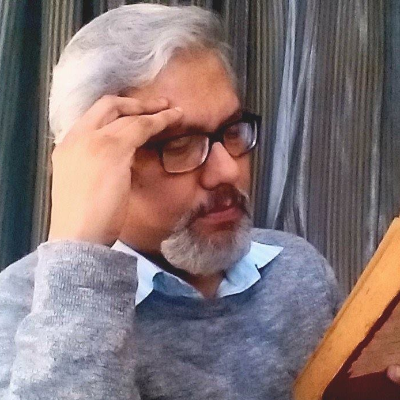



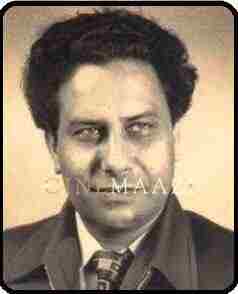
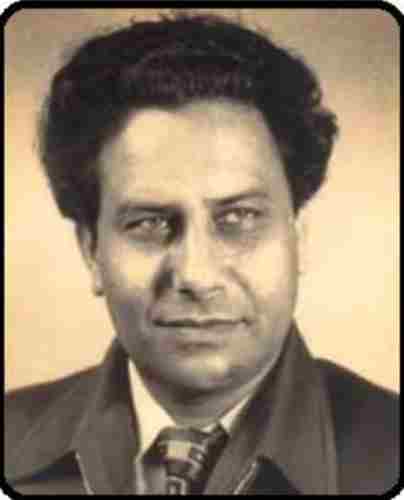
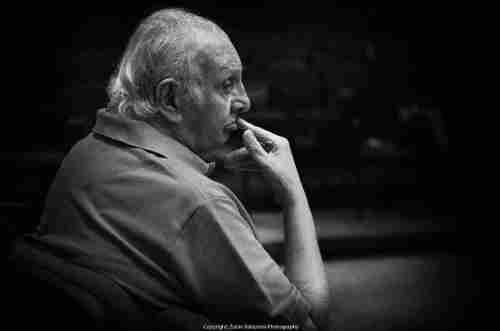
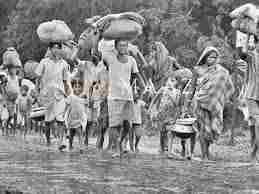
.jpg)


